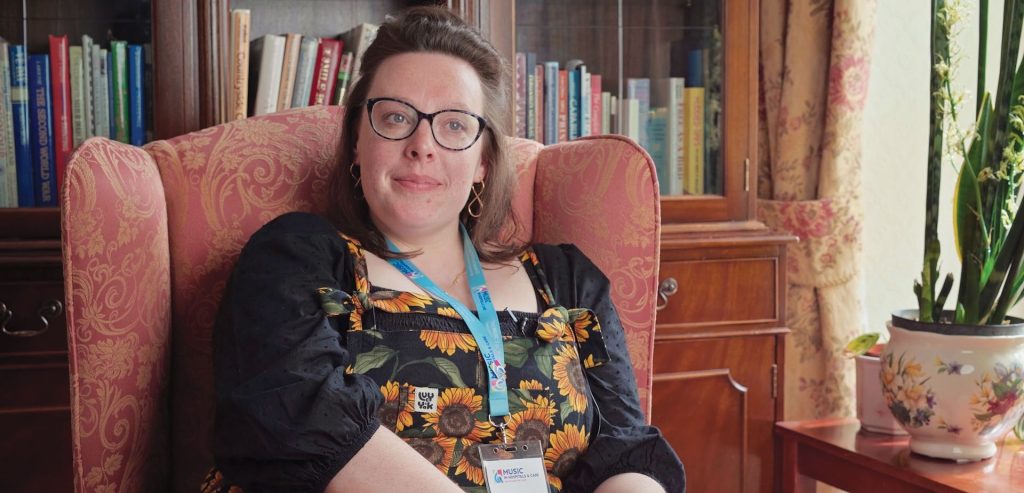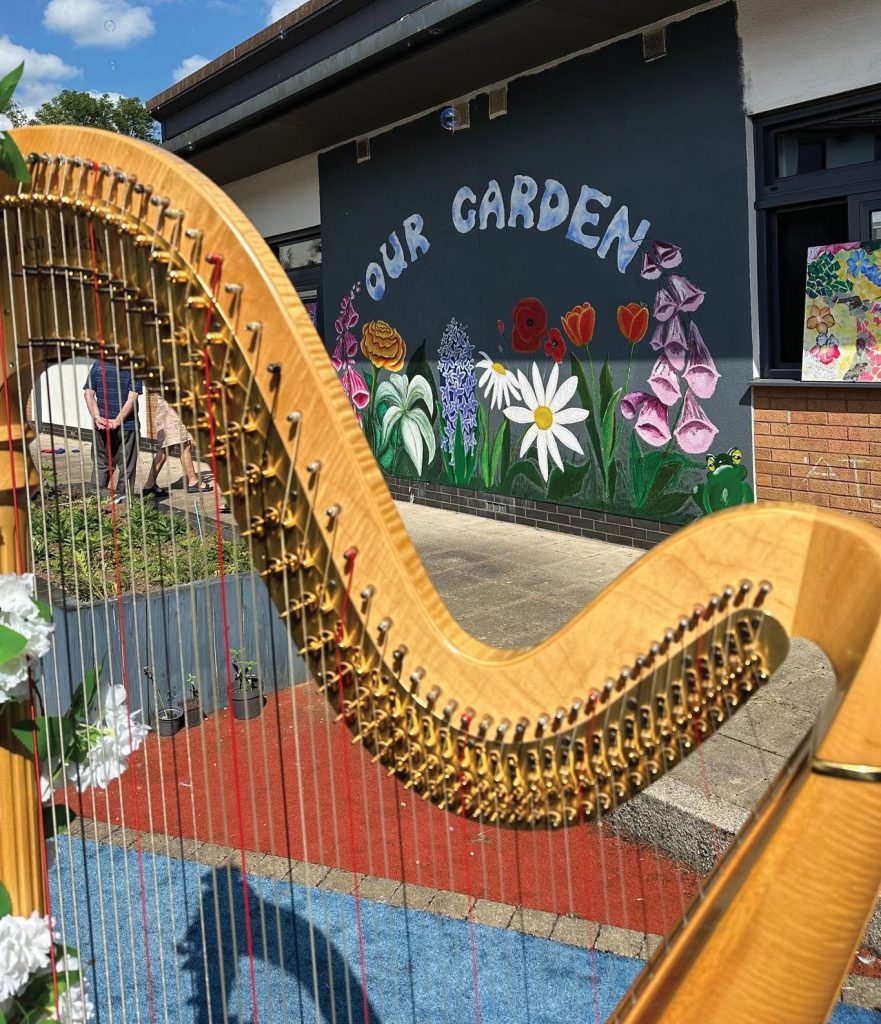Impact
We understand the importance and tangible benefits of embedding live music as a regular part of people’s health care plans and treatment.
We view access to live music as a necessity not a nicety. We know live music improves people’s quality of life through over 75 years of experience and stories, but we need to go further to achieve our longer-term ambitions. We see impact as an integral part of how we prove and improve our practice.
This year we put greater focus on how we measure and demonstrate the impact of our live music. Our new evaluation framework outlines how we gather feedback from patients, residents, service users, visitors, staff and musicians to investigate the difference our live music makes in the short, medium, and long term. As part of this, we introduced creative evaluation tools to the process for our music and visual arts pilots in Wales and at NHS Lothian hospitals in Scotland.

Marged’s story
Music in Hospitals & Care harpist Marged Hall was exposed to a wide range of musical styles during her childhood and was drawn to the harp from an early age.
After university, she began pursuing a career as an orchestral player but was diagnosed with a serious illness, which meant she had to take four years off to recover. During this time, she relocated from the hustle and bustle of London to a more tranquil life in rural Wales.
This life-changing experience led her to meet Haz, her self-confessed ’musical soul mate’ who introduced her to Music in Hospitals & Care. Since 2023, Marged has been sharing live music in hospitals, care homes and children’s wards with us.
From February to July 2024, our music and visual arts pilot funded by Arts Council Wales took place at Ty Llidiard, an inpatient NHS Children and Adolescent Mental Health Service (CAMHS) at the Princess of Wales Hospital in Bridgend. Ty Llidiard was one of the mental health settings that took part in our Music for Mental Health and Wellbeing project in 2023, which also involved Haz and Marged, where it became clear that the positive impact of live music alongside visual arts activities should be explored further.
Young people were invited to shape their own experience by choosing the music, contributing to session plans, and engaging at their own pace. This participatory approach helped to build a sense of empowerment and ownership, especially among those who might otherwise struggle with verbal or social interaction.
Working with both musicians and a visual artist to bring a variety of music with opportunities to paint, draw, use chalks and create with air-dry clay offered patients a calming and inclusive experience that helped to distract from an often busy and hectic ward environment. It created space for relaxation, self-expression, and non-verbal engagement.
Marged explains: “Ty Llidiard was a great project to be part of, we loved it, but it was one of the more challenging settings that we worked in. A lot of the health and care settings you get feedback from either the staff or the patients themselves, you get to know what they like, but actually teenagers and young people tend to be less communicative.
We found that going in every week helped us to start building up a little bit of trust and they started to open up. You got to know them a little bit through the various requests – whether it was for Eminem, Led Zeppelin or Taylor Swift.”
A staff member at Ty Llidiard said, “These are some of the most ill young people in South Wales, they often won’t take part in activities as they just find them overwhelming really, but here they were coming back week after week.”
Marged adds, “We felt that throughout the project, we got a better idea of what was needed and what was working. Towards the end of the project, they decided to paint a mural in the garden. It was great because it helped to enhance their space, and every single week they were adding to it. There were no limitations on what they could do. That seemed to work really well artistically. There were lots of positives along the way and working with the visual artist Chris was just amazing.”
By equipping staff with the tools and resources to support creative engagement, the project points to a new way forward in using live music and visual arts to support young people’s mental health.

Music in Hospitals & Care musician Marged Hall
“Towards the end of the project, they decided to paint a mural in the garden. It was great because it helped to enhance their space, and every single week they were adding to it. There were no limitations on what they could do.”
Highlights
As part of our longstanding partnership with NHS Lothian Charity’s Tonic Arts programme, we completed two new pilot projects at Edinburgh Royal Infirmary. The Emergency Music pilot saw our musicians performing in a new environment – the A&E department. This was an opportunity to reach new people, easing stress and providing a distraction while they were waiting for treatment.

We also trialled live music on the Medicine of the Elderly wards, in which patients rated themselves as 9 out of 10 compared to 2.5 out of 10 before the music. Patients can stay on these wards for months at a time, so would not have otherwise been able access live music. Staff also reported getting to know the people in their care better.

Our long-standing partnership with Wythenshawe Hospital continued, featuring monthly live music in the critical care department including Acute ICU and the Cardiothoracic critical care unit for people recovering from heart or lung surgery. Musicians also visited Laureate House, the hospital’s inpatient mental health unit for adults of all ages.

We embarked on year two of our learning project in Northern Ireland, sharing 42 hours of live music with three health and social care trusts to develop long-term programmes of live music. 66% of patients felt respite from emotional pain and stress, and 60% of patients felt respite from physical pain.
A pioneering new residency in collaboration with University Hospitals Coventry and Warwickshire, signifying the NHS Trust’s commitment to making live music an important part of patient experience. Violinist Helen Wilding and guitarist and harpist Annie Summers share uplifting live music in the oncology (cancer care) and paediatric (children’s) wards at Coventry Hospital once a month.


Our research project with the Edinburgh Centre for Research on the Experience of Dementia (ECRED) entered its second year, with live music at care homes in Edinburgh and Glasgow as well as a collaborative workshop at St Columba’s Hospice. The study explores how people living with dementia engage with arts projects, including music and dance, and whether these activities are meaningful to those who participate.

hours of live music in paediatric settings

hours of live music in older people’s settings

hours of live music across 11 tours in the Channel Islands